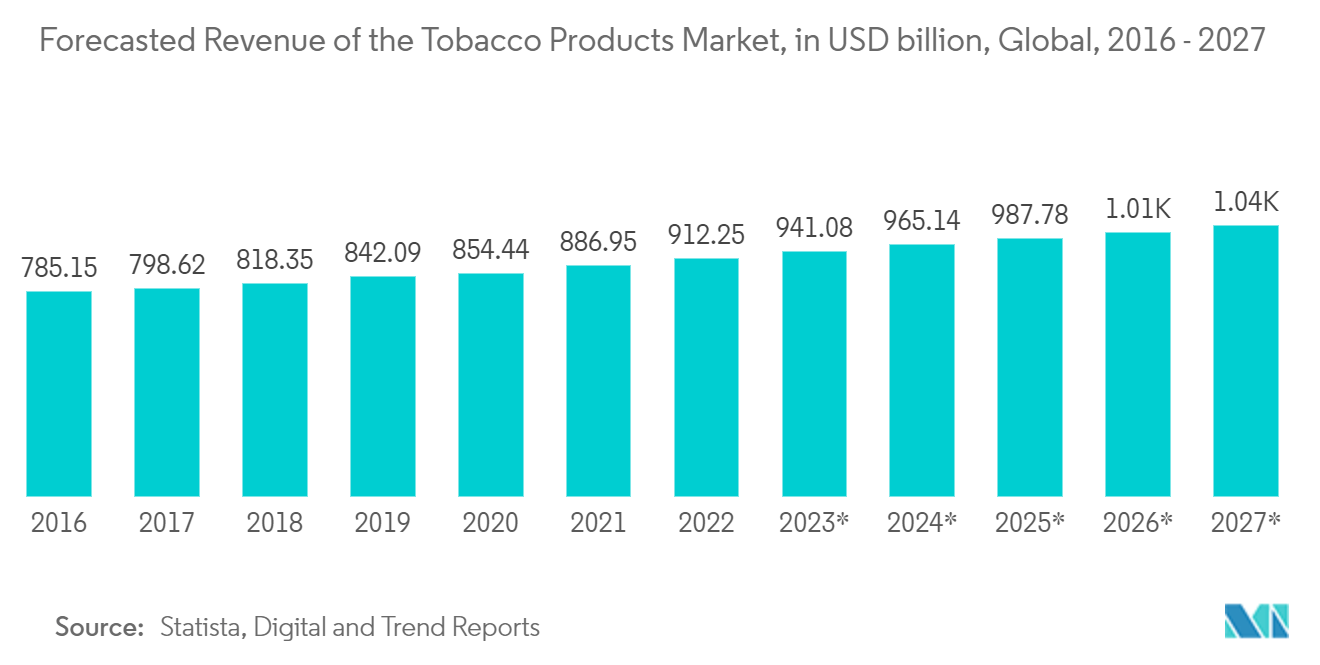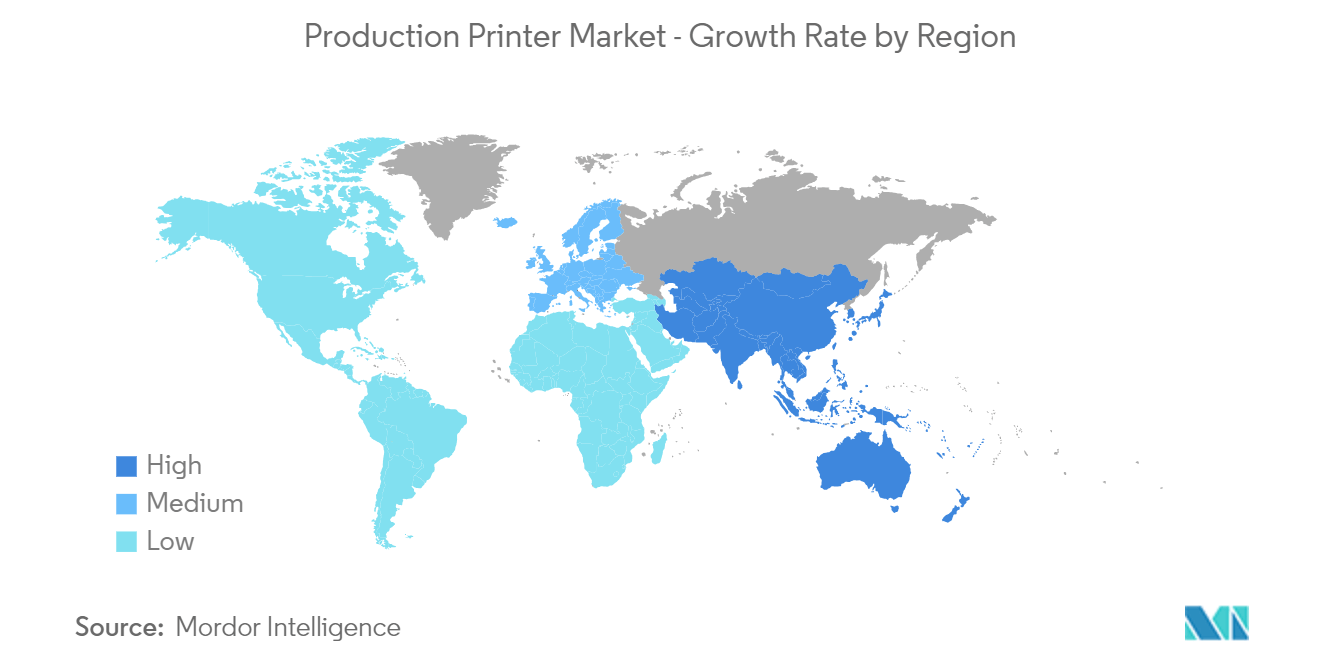Market Trends of Production Printer Industry
Packaging Segmented is Expected to Witness Major Growth
- Folding cartons, flexible packaging, and label printing are the three packaging applications that demand printing and cutting, with folding cartons adding a few more processes to the file preparation (structural CAD files) and finishing (die-cutting, folding, gluing).
- With a rise in the digital delivery of information, commercial printers have been imbibing digital technologies to enhance packaging print quality. Quick response (QR) codes have become a basic/mainstreamed print on product packaging to be scanned with a smartphone for additional display of data, such as product info and promotional content, to name a few.
- Additionally, the need for printing from packaging and labels for tobacco products, pharmaceuticals, and alcoholic beverages is expected to increase, as the companies have to comply with dynamic government regulations and safeguard against counterfeiting frequently. The tobacco products market is expected to register revenue of over USD 1 trillion by 2027. Such tremendous growth is expected to impact the market studied as well positively.
- Folding cartons have become the most prevalent packaging material in the food industry due to investments and innovations in design, digital printing, and sustainability. The continuous developments respond to consumers' and food manufacturers' requirements for improved shelf life and more personalization; folding carton packaging is expected to get significant adoption in the coming days.
- Advances in the quality and accessibility of digital printing on paperboard enable increased agility for food brands of all sizes. Printing large quantities of paperboard packaging without changing graphics or coatings is very cost-effective, accelerating the demand for paper and paperboard printing across the packaging industry. However, high-volume printing limits the ability to package personalized, seasonal, promotional products and ingredient changes.
- Rising association among the convertors and vendors surrounding packaging has led to the evolution of innovative ways of customer enticement. Online shopping and curating personalized experiences have further helped the market for commercial printing in the packaging domain. Owing to this, many packaging businesses are investing in commercial printing solutions, thus boosting the market's growth.

Asia Pacific Expected to Register Major Growth
- India, with its quickly expanding economy, expanding middle class, and rising demand for high-quality print materials is a prominent player in the global production printer market. India is a significant market for top production printer producers, including Xerox, Canon, HP, Konica Minolta, and Ricoh. Commercial printing, packaging, labeling, textiles, and other industries are just a few of India's many uses for production printers. Because of India's thriving e-commerce sector, packaging printing, for instance, has seen a significant expansion.
- Several international printer manufacturers have opened manufacturing facilities in India due to the Indian government's "Make in India" initiative. Production printer availability and production have increased in the nation as a result. India is one of the countries accelerating the adoption of digital printing technology due to the demand for customization, smaller print runs, and quick turnaround times. For instance, the production of custom-designed materials has made digital printing more common in the textile and garment sector.
- The Chinese economy has experienced astonishing growth in the last few decades, which catapulted the country to become the world's second-largest economy. The Chinese population is the largest and growing. Simultaneously, the economy is growing at a consistently high rate. Being home to major manufacturers and attracting multiple Fortune 500 companies, the Chinese commercial printing market and its opportunity to adopt digital printing technology have gained significance.
- The Japanese production printer market is known for its commitment to sustainability, quality, and innovation. It leads and influences technology in the worldwide production printer market. Although it faces issues with demographics and market saturation, Japan is well-positioned for ongoing success in this dynamic market due to its emphasis on advanced technology and eco-friendly practices.
- The demand for printing is expected to rise in the rest of the Asia-Pacific region, which includes countries like Singapore, South Korea, and Indonesia. The growing increase of nuclear families, new materials, increasing customer comfort needs, and population aging propel the industry. Another factor anticipated to drive consumer growth is the rising demand for packaged products. The growing demand for bottled water, alcoholic beverages, carbonated soft drinks, and canned juices has increased the purchase and consumption of bottled beverages.
- Within the global production printer market, the Rest of Asia is a diverse and active region. While Indonesia is emerging as a growing market and nations like Singapore demonstrate technological proficiency, innovation is driven by South Korea. The production printer market in the rest of Asia is positioned for ongoing expansion, albeit with variances across nations and regions as digital transformation and environmental concerns gain traction. Manufacturers in this area must regularly negotiate regulatory obstacles and seize new opportunities.

